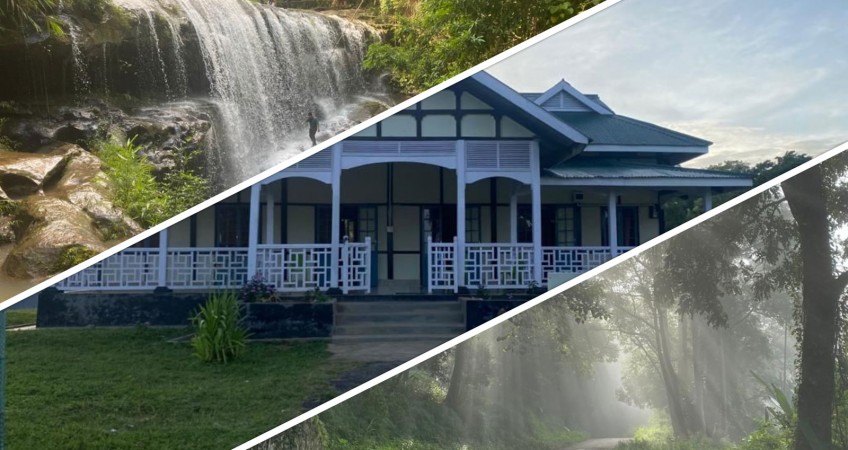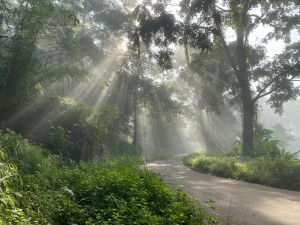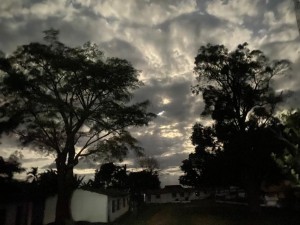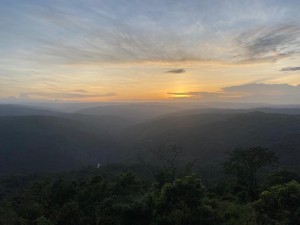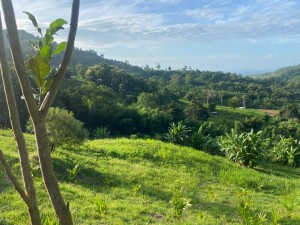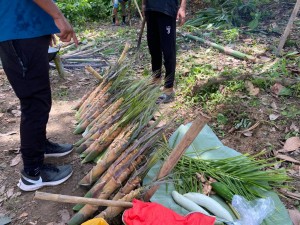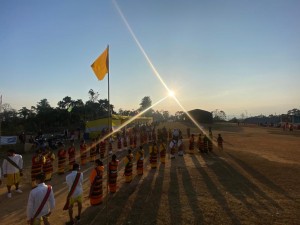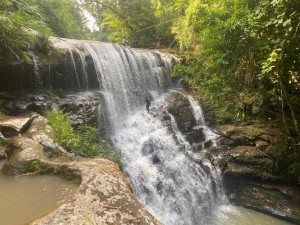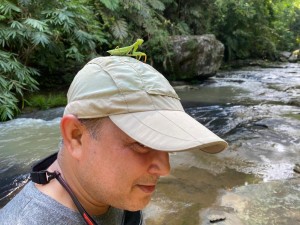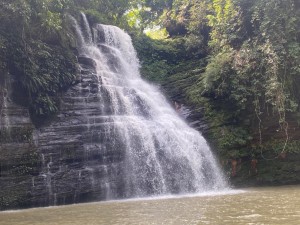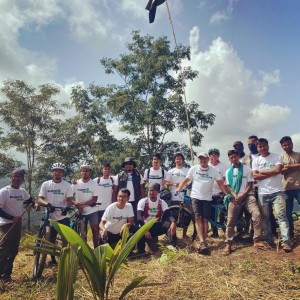Like most of us, the pandemic has not been kind to me as well. As an avid traveller, tour organiser and guide, the lockdown and subsequent restriction of movement can be depressing, especially when your bread is dependent on what you love to do.
The lockdown has however compelled me to try my hands in something else. As travelling seemed to be a plan so distant, I felt like penning down my experience of visiting some of the wonderful places in Assam, places which are full of nature’s blessings yet talked about less… places that need to be appreciated more ….
‘Dima Hasao’ the place to be, I did not know much about the beautiful district until the late 90’s. I decided to do a little bit of research before visiting the place and this is what was in store for me. It was earlier known as North Cachar hills.
Dominated by the Dimasa people, the mighty river Brahmaputra is known as Dilao (long river) in the region. Not only the river Brahmaputra but many other rivers in Assam even now use the names given by Dimasas. Many of the important towns and cities in Assam and Nagaland are named after the words that the Dimasas gave, such as Diphu, Dimapur (a capital of the Dimasa Kingdom), Hojai, Khaspur, etc.
One of the feel good factors that Dima Hasao possesses, is it’s pleasant weather all through the year. While winter is colder than many parts of Assam, summers are pleasant to visit Dima Hasao and get away with the scorching heat in other parts of the state.
What to visit in Dima Hasao:
The district has a huge Tourism potential in the areas of Adventure, Nature / Wildlife, Culture and Archaeology.
Adventure is something you will never miss while travelling to DimaHasao. Being the only Hill station of Assam it has huge potential in Adventure Tourism
A village called Gunjung in Dima Hasao is an ideal place for Adventure Tourism. It was once the headquarters of the British in the district. Some structures of colonial buildings are still visible in this village. The village acts as a perfect host for adventure sports’ activities like Paragliding, MTB and Rock Climbing. Apart from this, it is also a beautiful place for bird watching and trekking. If you want to experience this place in full, I would highly recommend you to get a guide from the village and hire a MTB bicycle to move around the place.
Dima Hasao boasts of some of the highest peaks and innumerable waterfalls in Assam.
This place is also called the ‘Green Lungs of Assam’ because of it’s lush green forests and hills. The highest peak stands at 1932 mts in the Sub Himalayas or the Borail range. If you can scale these peaks, it will give you a spectacular view of the sunrise.
Let me tell you an interesting fact about a small village called Jatinga. During the months of September to November, it is known for a mysterious phenomenon of migratory birds being drawn to lights during night time. Scientists and ornithologists have been trying to explore and understand why birds behave in such a peculiar manner. This phenomenon has made Jatinga, of Dima Hasaoa, a sensation across the globe.
The Amur Falcon, a small raptor of the falcon family which breeds in south-eastern Siberia and Northern China migrates in large flocks to Southern and East Africa across the Arabian Sea and stops over at DimaHasao.They can be sighted during the months of November and December. Primates like Hollock Gibbon, Slow lorris, etc are some of the other rare species which are found in this district.
Dima Hasao is a land of diverseness. The district is populated by various peoples and races who maintain their own dialect, culture, customs and a way of living. The Dimasa community, which once ruled over the larger part of the state, began to shrink with the rising power of the Ahom state that ruled for about six hundred years. Two hundred years of colonial rule completely decimated the medieval Dimasa state and today they are mostly concentrated in the district of Dima Hasao. Maibang, one of the capitals of the medieval Dimasa state is located in this district, where dilapidated brick structures of huge palace complexes are visible. Other capital cities like Dimapur in Nagaland, Khaspur in Cachar districts, Kasomari in Doyang, Dhansiri Valley in Golaghat are some of the remains out of many that speaks of the way the Dimasa state had in this part of the world.
Primarily an oral society, Dimasa culture is rich in traditions, social structures, belief system, textile and cuisine etc. They follow a descent system where both male and female clans are used parallely, which is known as double descent anthropologically. Their traditional rice brew stands out in taste, flavor and colour which is due to use of unique variety of herb and rice cultivar.
The Archaeological Richness:
The archaeological potential of the district was first illuminated by J.H. Hutton and J.P Mills in 1932. They reported about the existence of several Monolithic stone jar sites in the district which are very unique burial jars and not found anywhere in India. Only Laos and Indonesia have parallel examples of such stone jar sites. There are ten reported sites in the district so far of which one is the largest site in the world with more than four hundred jars.
Haflong is the headquarters of DimaHasao, where you can find good hotels such as :Hotel Landmark, Nathao Lodge, etc. You can also find a good number of homestays. In Gunjung they have a renovated old British bungalow for accommodation. For someone on a budget trip, tents and Homestays are also easily available.
Nearest Airport is Lokpriya Gopinath Bordoloi Airport (Guwahati). Night and Day buses ply regularly from Guwahati to Haflong from ISBT (330Kms). Nearest railway station is ‘New Haflong Station’.There are direct trains plying regularly to Haflong from Guwahati (6 hours journey).
How to visit Dima Hasao:
If you are someone who is interested in traveling to Haflong, I am leaving behind an itinerary for you that will come in handy. The knowledge and information that I gathered about this unique destination DimaHasao has surely left me spellbound.
Day 1: Guwahati to Haflong
The journey from Guwahati to Haflong is a total of 334 Kms. You drive to Haflong via NH27, crossing Lumding, Lagting, Kalachand, Maibang, Mahur and Jatinga. The journey approximately takes 6 to 7 hours. You can stay overnight at Haflong.
Day 2: Gunjung
After a good breakfast, drive to Samparadisa Village. From here you can trek to BendaoBeglai waterfall. You can enquire about a unique lunch prepared by the locals. This lunch is cooked in bamboo and also serves dishes made from bamboo. After lunch, travel to Gunjung. You can camp at Gunjung or stay in a British bungalow or find a place in someone’s home. Enjoy a wonderful night under the sky at Gunjung with Judima (a local rice brew known for its taste and flavour) accompanied by folk tales from the guides.
Day 3: Gunjung
Early morning you can go for a 4 km trek in the wilderness of Gunjung through jhum cultivation. If lucky, you may hear the welcome note from Hollock Gibbon. Take rest and after that explore a neolithic archaeological site at a village nearby and the paragliding site. In the evening you can enjoy the beautiful sunset from Gunjung view point. Post this, you can enjoy a short cultural performance by the local youths with light refreshments. Night stay at Gunjung.
Day 4: Gunjung – Panimur Waterfall to Guwahati
Early morning you can drive to Panimur waterfall which is 92 kms from Gunjung and from there you can drive back to Guwahati.
Notably, Dima Hasao is one of the few places in India that is connected with Vistadome train coaches. The coaches are operational two days a week. A journey from Guwahati to New Haflong station will cost you around Rs.1200. With this new service and improved pandemic situation, the hill station is expecting increased footfall than the past few years.

